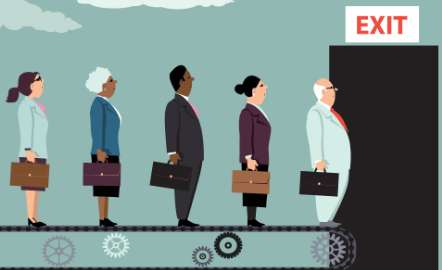U.S. Job Growth Nearly Stalls in August, Fueling Fed Rate-Cut Bets
On Friday, data released by the U.S. Bureau of Labor Statistics showed that U.S. job growth in August slowed more than expected, nearly stalling, while figures from the previous two months were sharpl

On Friday, data released by the U.S. Bureau of Labor Statistics showed that U.S. job growth in August slowed more than expected, nearly stalling, while figures from the previous two months were sharply revised downward again, indicating a significant deterioration in the labor market. This led traders to increase their bets that the Federal Reserve would begin a rapid series of interest rate cuts starting this month.
Specifically, seasonally adjusted nonfarm payroll employment in the U.S. for August came in at 22,000, far below the market expectation of 75,000. The previous figure was revised from 73,000 to 79,000.
Following the data release, the U.S. dollar index briefly fell by about 40 points. At the same time, spot gold rose nearly $25, breaking above $3,580 per ounce to hit a new record high.
It is worth noting that the June nonfarm payroll figure was revised down by 27,000 from 14,000 to -13,000, and the July figure was revised up by 6,000 from 73,000 to 79,000. After revisions, the combined job gains for June and July were 21,000 lower than previously reported.
Additionally, the U.S. unemployment rate for August was 4.3%, in line with market expectations, marking the fourth consecutive monthly increase and the highest level since October 2021.
Economists attribute the slowdown in job growth to two main factors: first, the Trump administration's comprehensive imposition of import tariffs, which sharply increased business costs and dampened hiring intentions; second, tighter immigration enforcement, which directly reduced labor supply.
Trump's tariff hikes raised the average U.S. tariff level to its highest point since 1934, sparking inflation concerns and forcing the Federal Reserve to pause its rate-cutting cycle. Although most tariffs have now been implemented, easing some trade policy uncertainty, a recent ruling by a U.S. appeals court that many of these tariffs are illegal has left businesses in a wait-and-see mode.
Despite the slowdown in hiring, average hourly earnings rose 0.3% month-on-month, matching market expectations, and increased 3.7% year-on-year, slightly below the market forecast of 3.8%.
From an industry perspective, the healthcare sector once again led job growth, creating 31,000 new positions, while social assistance added 16,000 jobs.
However, federal government employment became a drag, declining by 15,000 in August and having fallen by 97,000 since peaking in January. Employment in wholesale trade continued its downward trend, decreasing by 12,000.
Signals of a cooling labor market have been emerging over the past several months. July's job gains fell significantly short of expectations, and historical data were revised downward unprecedentedly, leading directly to Trump's dismissal of Labor Statistics Bureau Commissioner Erika McEntarffer. Trump has since nominated E.J. Antoni, an economist from the conservative think tank Heritage Foundation and one of his staunch supporters, for the position, though the nomination still requires Senate confirmation.
Other labor market data released this week further confirmed the cooling trend: private-sector hiring slowed sharply, initial jobless claims rose to a nearly three-month high, layoff announcements increased, and, more critically, the number of job seekers exceeded job openings for the first time in four years.
Economists warn that this stalemate of "low hiring, low layoffs" has nearly stagnated labor market mobility, and if hit by an external shock, the unemployment rate could surge rapidly.
The market widely expects the Federal Reserve to announce a 25-basis-point rate cut at its policy meeting on September 17. Fed Chair Jerome Powell and his colleagues have recently emphasized concerns about slowing employment, even though layoff levels remain relatively stable. At the same time, policymakers are also worried that Trump's tariff policies could reignite inflation, with the latest data indicating a slow but steady rise in prices.
Ernie Tedeschi, Director of Economics at the Yale University Budget Lab, commented that the current labor market is characterized by low mobility, with neither large-scale hiring nor massive layoffs. Job growth now primarily depends on the net growth of new businesses, but this data is derived through modeling rather than survey results, making it most susceptible to revisions.
Disclaimer: The views in this article are from the original Creator and do not represent the views or position of Hawk Insight. The content of the article is for reference, communication and learning only, and does not constitute investment advice. If it involves copyright issues, please contact us for deletion.